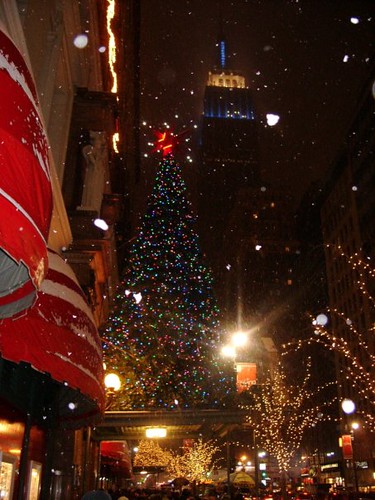Part of the fun of living in Washington and being able to hear the National Symphony Orchestra on a regular basis is the chance to hear some of the world's leading musical talents. Those talented artists aren't always just big-name soloists on the concert tour, but sometimes they include major talents known primarily to the craft. Thus it was this past weekend when we went to hear an NSO Pops Concert called "Jerry Herman's Broadway."
Now, anybody can throw together a bunch of Jerry Herman songs and have a Herman concert, but the NSO gave us the singular opportunity to hear Herman conducted by a Herman expert, Donald Pippin.
Donald Pippin? Who? Pippin is the former longtime musical director of Radio City Music Hall and the person who conducted a careerful of major Broadway musicals during their long runs, including Jerry Herman's musicals and other major shows like
Cabaret, A Chorus Line, Applause, and
Oliver. He's won Tonys, Emmys, gold records, and other drama awards, but since he's in the orchestra pit, most theater goers don't know his name or recognize his face. In putting together this concert, he was able to call up Jerry Herman and discuss what to play, and he already was very, very familiar with the music.
Pippin led the show, sometimes from the podium, sometimes from the piano, and interspersed a comfortable, chatty commentary in between numbers.
The show opened with an arrangement called "Symphonic Overture," and the second half opened with an arrangement of marches from Herman musicals. Near the end of the show, they played a special arrangement of the title song from
Hello, Dolly—what Herman calls his most internationally-known song—called "International Dolly," with very cute national flavors from around the world. The rest of the show was a series of solos and duets from Herman's musicals
Hello, Dolly, Mame, Mack & Mabel, La Cage aux Folles, Dear World, Mrs. Santa Claus, Milk and Honey and even Herman's brand new musical,
Miss Spectacular.
The songs were sung by soprano Melissa Errico, mezzo-soprano Debbie Gravitte, tenor Hugh Panaro, and baritone Ron Raines. All four have considerable Broadway credits, though Raines is probably best known for his long-time character Alan Spaulding on the CBS soap opera
The Guiding Light. I particularly liked Gravitte. Her personality was just bubbly and she really commanded the stage when she was on.
The NSO played sturdily for Pippin, though a few times I found them a bit wooden, rather like a Broadway pit orchestra that had played the same show for too many hundreds of times. As they are wont to do at Pops concerts, the gentlemen wore white dinner jackets and the women were in white tops, the fact that we aren't anywhere near Memorial Day notwithstanding. I think they feel it necessary to have a less serious costume for their less serious pops concerts, but I'd much rather they went with blazers and regular ties than dress sartorially incorrectly for the winter.
Also, as usually happens at Pops concerts, special lighting in reds and blues illuminated the side walls of the proscenium arch and the organ pipes in the back of the stage.
After the show, we somehow managed to walk to Adams-Morgan and ate a late supper at Lauriol Plaza, where Kevin had a taco platter, Robert had a fajita platter, and I had shrimp and crab enchiladas, with calimari for the table to share.



